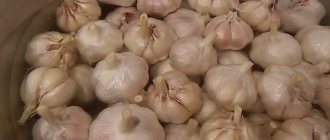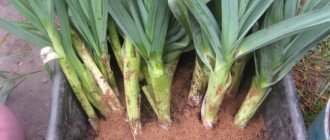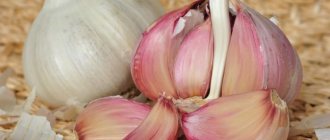Thanks to its magical aroma and beneficial substances, rosemary is used in cooking, folk medicine and home cosmetics. It adds piquancy to the taste, stimulates the immune system, and relieves inflammatory processes. This seasoning is not yet very popular in Russian cuisine, but housewives are increasingly thinking about how to prepare rosemary so that it does not lose its unique properties. After all, in winter, at home, having tried a tincture or an original dish, you will be able to remember pleasant summer days.
How to store
Frozen
If it’s not always easy to find fresh rosemary in your city, buy a lot at once and freeze it.
To do this, rinse it and dry it. Then place in a plastic container or ziplock bag and place in the freezer. As needed, open the bag and break off the required number of branches.
In this way, it can be stored for a very long time, it takes up practically no space, and now you always have fresh rosemary at home.
Idea
: Pour broth or water into an ice cube tray, add a couple of rosemary leaves to each “cube” and freeze. Add one or two ice cubes to soups or hot dishes for flavor.
Dry
In dry form, rosemary is usually stored in a closed glass container. It is better to place the jar in a dry, dark and cool place. So it can be stored for about 6 months.
Rosemary
- a genus of perennial herbaceous shrubs.
Also the same name has a spice that is very often used in cooking. Both fresh and dried leaves of the plant are used for cooking and in winter preparations for future use.
The homeland of the shrub is considered to be the Mediterranean, where rosemary can still be found in the wild.
The spice got its name due to the fact that it grows on the sea coast. Translated from Latin it means “sea dew.” In Ancient Rome, this plant was associated with the goddess Venus. It was believed that it prolongs youth and expels evil spirits from the house.
Before you start preparing dishes with rosemary or using the spice to preserve vegetables for future use, you must choose the right product. The fresh leaves of the plant are characterized by a mixture of smells of camphor, lemon, pine and mint. They also have a bitter aftertaste
It is very important that there are no black spots on the branches of the plant, and that the leaves are not touched by pests. If you purchase already dried seasoning, it must be sealed and have a specified shelf life and expiration date.
The spice should not contain any artificial flavors. To prevent the possibility of essential oils eroding, it is necessary to store the spice in a tightly closed glass jar in a dark and dry place.
Rosemary is used everywhere in cooking. It is added to ready-made dishes to give them the necessary aroma. The spice goes well with other dried herbs and is most often used along with black pepper, basil, thyme and marjoram.
In preparations for the winter, rosemary is also used as a seasoning. Vegetables are pickled and preserved with it, and it is added during home-curing of meat and poultry. Mushroom preparations are very tasty if you add dried spices to them.
The recipes below with step-by-step photos provide additional information on how you can use rosemary in winter preparations for future use at home.
- Turkey with prunes
- Pork baked with apples
- Tuna steak
- Lenten Lentil Soup
Dried rosemary
- a spice whose aroma differs from all others in its subtlety and sophistication. It is known to many and looks in its familiar form exactly like the spice in the photo.
The taste of rosemary is bitter, and the spicy ether of its leaves, when bitten, resembles pine with light notes of eucalyptus and lemon. It has long been noted that the use of seasoning helps reduce the amount of salt in dishes. But I would like to note that this amazing spice is not “friendly” with bay leaves, so the use of one spice completely excludes the use of another in the same dish.
Due to our geographical location, we only have access to dried spices, which can easily be purchased in any corner of the country.
It is in this form that it is most often used. People don't know how easy it is to grow spices in a flower pot on a windowsill.
How to use
Before adding to food, rosemary should be quickly rinsed under cold running water and then dried.
Most recipes use the leaves, which can be easily torn from the stem. Depending on the type of dish and the wishes of the cook, they can be added either whole or finely chopped.
Alternatively, you can add the whole stem to flavor soups, stews and meat dishes. Don't forget to take it out before serving, it's not very pleasant to chew.
Some ideas on how to use rosemary:
- add fresh rosemary to omelet;
- rosemary is simply a great companion for chicken and lamb;
- add rosemary to tomato sauce and soups;
- Try adding a sprig of rosemary to your gin and tonic or lemonade;
- Finely chop fresh rosemary, mix with olive oil and use as a sauce for toasted toast. And if you additionally add to this sauce finely chopped ripe tomatoes and a couple of cloves of garlic... I won’t write anything, you simply have to try it yourself. Don't forget the toast.
Storage methods
Many housewives grow spicy crops on windowsills in boxes and tubs. Greens should be harvested before the flowers bloom, when they contain the highest concentrations of nutrients. For harvesting, young shoots no longer than 20 cm with the largest amount of juice are selected. Flowers are also prepared. They are dried to preserve their aroma and beneficial properties. Then added to tinctures and teas.
Fresh rosemary can be stored in the refrigerator or at room temperature. Wash greens only before eating. Otherwise it will quickly deteriorate. Leaves and shoots are wrapped in parchment and sprinkled with water from a spray bottle until the package is completely saturated. The greens are then placed in a plastic bag and placed in the vegetable drawer of the refrigerator.
At room temperature, the spice is stored in a jar of cool water, collected in a bunch. The top is covered with polyethylene. If moisture collects on the leaves, wipe it off with paper napkins. Every 2-3 days the water in the jar is changed.
Important!
To preserve the freshness of the spice, high humidity and temperatures up to +5°C are required. The greens are regularly inspected, removing damaged leaves.
Freezing
Rosemary can be frozen for the winter. It has resinous leaves, so this method ensures long-term storage. The greens are washed and dried. Then the leaves are torn off and laid out on a plate in one layer. Frozen rosemary is placed in bags and the air is released from them. In this form, the workpiece is sent to the freezer.
The spice can be stored in winter by freezing in oil. To do this, the greens are chopped and placed in ice trays. Melt the butter and cool slightly. Rosemary is poured over it and frozen in this form. This preparation is used for preparing vegetable and meat dishes. In this form, greens can be stored for up to 8 months.
Drying
May be interesting Thyme: types and varieties with descriptions and photos How to grow lemon thyme: growing in open ground, planting and care, photos How and why to grow spearmint
Dried spice completely retains its smell and taste. Thanks to the hard fibers, even the texture of the leaves does not change. There are several ways to dry rosemary:
- In the air, the tops of young shoots are washed and dried. They are then tied into bundles and hung in a well-ventilated room away from sunlight.
- At home, you can dry rosemary in the oven. To do this, place the greens on a baking sheet, covering them with baking paper. Drying is carried out with minimal heat.
- Leave the greens in the dehydrator for 48 hours. The device is turned on to minimum mode. Hard leaves take longer to dry.
Plants dried using the proposed methods completely retain their taste, aroma and other properties. After drying, the greens are placed in a glass container and sealed tightly. In this form it can be stored for up to six months.
Rosemary tinctures
This unusual alcoholic drink has a pleasant taste and has a healing effect. They are taken orally or used externally. To prepare the tincture, use alcohol. Take 2-3 sprigs of spice per 200 ml of liquid. To add an unusual flavor, add the peel of citrus fruits, such as orange, lemon or grapefruit. The mixture is left in a dark glass container at room temperature for 3 weeks. Then filter and store in the refrigerator. When consumed in small quantities, such tinctures improve heart function and heal the kidneys and bladder. They are used externally to rub joints with arthritis or arthrosis.
With salt
The spice is preserved by mixing with salt. To do this, the leaves are torn off the branches. They are added to the blender along with regular table salt and mixed thoroughly. The operation of the device is stopped when the mixture acquires a uniform green color. Then it is transferred to a baking sheet lined with a thin layer of baking paper and leveled. It is dried for 15 minutes in an oven heated to +110°C. The prepared aromatic salt is poured into a glass container and carefully closed. It is used to prepare savory pastries, vegetable salads or meat dishes.
In a vacuum
To preserve freshness for a long time, the spice is vacuum packed. To do this, you will need a special device that sucks air from dense pacts. Washed and dried greens are placed in them. In this package, rosemary does not need to be frozen. It does not deteriorate for a long time and completely retains its appearance and properties for several months.
Storing in sea salt
- Carefully separate the rosemary leaves from the stems and mix with sea salt. It is better to do this using a blender. For every ten stalks of grass you will need 80–90 g of salt.
- Stop the blender when the salt turns green.
- Cover the bottom of the baking sheet with baking paper.
- Spread the salt mixture in a thin layer. Level it out.
- Place in the oven (110 degrees) for a quarter of an hour.
- Place the mixture in clean jars, close tightly and store in a dry and dark place.
The result is flavored salt, which is an ideal seasoning for salads and a topping for savory baked goods.
Rosemary is an evergreen shrub that grows throughout the Mediterranean and is widely used as a spice in Greek, Italian, and French cuisine. Fresh and dried young leaves of this plant give dishes a unique taste.
Rosemary tastes spicy, sharply bitter, fresh leaves have a strong sweetish aroma with notes of camphor, pine and citrus. When dry, the spice has almost no smell, but if the leaves are mashed and broken, a strong pleasant smell is immediately felt.
In Mediterranean countries it has long been used. And now rosemary essential oil is widely used to treat bronchitis; baths with rosemary are recommended to relieve nervous tension and treat bronchitis. It has been noted that regularly adding rosemary leaves to dishes helps prevent colds.
Uses of dried rosemary
The uses of dried rosemary are wide. It is most often used in cooking, but there are also recipes that allow you to use it to maintain health and beauty.
In cooking
Rosemary is used in cooking in different ways.
Experienced chefs don’t even think about such a common question as how to use and where to add dried rosemary. And we will reveal the secrets of this seasoning to everyone who is curious.
This aromatic spice is added during cooking:
- marinades for meat and fish;
- vegetable casseroles;
- pizza and other Italian pastries;
- fish dishes;
- flavored drinks.
Of all types of meat, dried rosemary goes best with lamb, well interrupting its specific smell. Due to the fact that the spice has a very pronounced aroma, it should be added to dishes in small quantities. It is advisable to grind the leaves in a ceramic mortar: then they will release more of their piquancy.
The composition of the spice is quite rich and in the dried product it differs from fresh sprigs only in the smaller amount of essential oils, which inevitably disappear during the drying process.
The plant contains alkaloids, various oils and esters, which give the leaves an inimitable flavor. Rosemary oil contains camphor, which gives it a lasting aroma.
Dried rosemary, as well as the fresh product, is rich in vitamins A and C, as well as B vitamins, including niacin. The plant contains essential minerals such as manganese, iodine, iron, as well as potassium, calcium, copper, sulfur and magnesium.
In cosmetology
The use of spice in cosmetology has also proven itself well. An aromatic oil is obtained from rosemary, which is used by beauty salon specialists for inflammation of the skin. I would also like to note that this oil effectively tightens sagging skin.
At home, you can easily prepare a facial tonic by infusing 1 tablespoon of dried leaves in one glass of vodka.
It is also easy to make an infusion for compresses, which is used as a means of combating the so-called “bags” under the eyes. It is prepared from two tablespoons of seasoning, which are poured with boiling water. The optimal volume of liquid is 300 ml. Use the product warm when the temperature of the infusion drops to 37 degrees Celsius.
The decoction also has a beneficial effect on the hair. It is used as a mask and applied for 10 minutes after washing.
Why is rosemary used in cooking?
In Italian cuisine, rosemary is used in the preparation of any dish. Fresh and dried leaves are added to poultry and poultry dishes, used in soups, and any marinades are also incomplete without rosemary. It is added to a variety of sauces and flavored with olive oil and vinegar.
Previously, we practically did not use the rosemary spice, but now this spice is in every store. It is sold dried, whole leaves and ground. Rosemary is included in the mixtures “Provencal Herbs”, “Italian Herbs” and many other sets that housewives use to prepare any dishes: meat and fish, mushrooms and cabbage, potatoes and eggplants.
How to choose good rosemary
So, before you start organizing storage, you need to choose this spice correctly.
It is necessary to pay attention to the appearance of the leaves: their color should be rich dark green. They shouldn't look withered
If the bulk of the dark green color contains yellow leaves, albeit in small quantities, then it is better to refrain from purchasing. Most likely, the spices have been lying on the counter for a long time, and their unforgettable aroma has already become much weaker.
If there are black dots on the leaves, then such rosemary leaves should also not be purchased. This may indicate that the plant was sick or was stored incorrectly. In both cases, you will not get pleasure from adding such a seasoning to food.
It’s good if you have the opportunity to assemble a bouquet from leaves yourself. This way you can choose the spice sprigs that are most suitable for all parameters. As a rule, this is possible only in some large stores, but in the market you can negotiate with sellers about such a selective purchase.
How to dry rosemary
Compared to milder herbs such as parsley or basil, rosemary naturally retains its flavor, color and texture when dried.
Also, dried rosemary retains all its beneficial properties, more details about them in the article “Rosemary - beneficial properties and contraindications .
It is very easy to dry. There are three commonly used methods: air drying, oven drying, and dehydration are all great options.
- After washing and drying the rosemary stems, place them together. Tie the base and hang in a room with good air circulation until dry.
- Rosemary also dries evenly in the oven. Place the sprigs on a sheet of baking paper and set the oven to the lowest temperature.
- Place the stems in the dehydrator, turn it to the lowest setting, and wait a couple of days. Due to the hardness of the leaves, the drying process takes longer compared to other herbs.
How to choose good rosemary
This spice is commercially available in the following varieties:
- dried leaves;
- dried twigs;
- fresh twigs.
If you have the opportunity to choose it fresh, then pay attention to the following conventions:
- the leaves should stay well on the branches and not fall off, have a slight bluish coating, this indicates that they were picked recently;
- if the cut of the branches is withered, it is better to refuse the purchase;
- if there are yellow leaves on the branches, it is better not to buy them;
- the presence of black spots on the stem and leaves also indicates that it is a spoiled product.
- It is better to choose a factory-packed package;
- when buying by weight, chew 1-2 leaves to feel their inherent taste; if it is not there, refuse to purchase;
- look at the expiration date of the spice; the best is considered to be the one that is packaged in the summer, during the period of plant growth;
- it is better to give preference to a more expensive, but well-known and trusted brand with a worldwide reputation, preferably made in Italy;
- Shelf life should be up to 6 months;
- The composition must contain 100% leaves without salt, additives or preservatives.
Rosemary: Harvest
The best time to collect greens as a spice is from June to August. Rosemary blooms at the end of spring and at this time the concentration of ether in the leaves is at its maximum level. If you need the plant as a remedy, then it is best to collect it before the first flower falls - at the end of May. You can use not only the shoots, but also the flowers themselves.
The second flowering period occurs at the end of August, beginning of September. After the second flowering, the leaves become drier and lose some of their nutrients. Therefore, it is important to know when to harvest rosemary. Autumn grass will no longer be so fragrant and rich in taste.
You can eat the shoots fresh at any time as long as the bush remains green.
How to collect correctly
The highest concentration of nutrients is collected at the tops of the stems. For winter storage, it is recommended to cut off the upper parts of the shoots, at a distance of approximately half their height from the ground.
In the lower part, the stems are coarser, tougher and less fragrant. Although, if you plan to prepare a large amount of spice, you can use the entire shoot. Cut the branches with ordinary garden shears or other convenient tools. It is more convenient to collect with bare hands, but you can also use gloves.
How to Preserve Rosemary for the Winter
For long-term storage I make different mixtures of aromatic herbs. I experiment and find interesting combinations. I’ll tell you how to properly store fresh rosemary and oils for the winter.
Watch the video on how to make rosemary oil.
Freezing in oil
Friends, I keep the seasoning frozen, just fill it with oil. This way, the beneficial and taste qualities are preserved with virtually no loss.
Ingredients
- Olive oil – ⅓ cup.
- Chopped rosemary leaves - 2 cups.
Instructions
- I mix the ingredients.
- I put it in the compartments of the ice container.
- I put it in the freezer.
- I take out the cubes as needed and store the remaining ones for 5-6 months.
Calorie content per 100 g: 315 Kcal.
You can pour olive oil directly into the compartments
Have you learned how to freeze rosemary? Find out how to preserve sorrel for the winter so that the vitamin-rich vegetable is at hand at the right time.
Have you tried freezing rosemary and butter?
Not really
Storage in paste
Dear housewives, I am mixing spices for the winter that will harmonize perfectly with each other in dishes. I think the best option for long-term storage of rosemary is to prepare various pastes. I bring to your attention the recipes for the most organically combined mixtures.
Ingredients: option 1
- Olive oil – ½ cup.
- Rosemary leaves - 3 cups.
- Chopped ginger root - 2 tbsp. l.
- Ground garlic – 2 tbsp. l.
Ingredients: option 2
- Butter – 250 g.
- Lemon zest – 1 pc.
- Garlic – 5 cloves.
- Rosemary leaves – 5 tbsp. l.
Instructions
- I place each set of ingredients separately in a bowl.
- I grind it with a blender or twist it in a meat grinder.
- I put the resulting paste-like slurry into ice compartments and put it in the freezer overnight.
- In the morning I put the cubes in a container with a lid and put them back in the freezer.
- Or I immediately put them into ziplock bags, release the air and stack them on top of each other in the freezer.
- I take out the right amount to add to the dish and don’t freeze it a second time.
- The paste sits at a temperature of -23 degrees for six months.
Calorie content of pasta with olive oil per 100 g: 1015 Kcal.
With cream – 879 Kcal.
Freeze rosemary
Rosemary's resinous leaves make it an excellent candidate for freezing. You can freeze the leaves in bags after releasing the air from them first.
The most convenient way to freeze rosemary requires one more step, but the results are worth it.
- Take individual rosemary sprouts, leaves still attached to the stem, and place them on a baking sheet.
- Place the stems in the freezer for a few hours until they harden.
- Collect the branches in a bag and put them in the freezer. Instead of a handful of individual leaves, you get convenient twigs. They can be added to your favorite dish as needed.
Rosemary sprigs
Photo gallery of rosemary storage
vivace_della_casa spicy_creativity mrs.marylis meatloverekb spicestore.ru blogirena ira.kachkalda healthy_plants_ healthy_plants_ spicesguide
I will highlight the main thing
I will select key points from the text.
- Dried rosemary is used more often and lasts longer.
- In paste or filled with oil, it retains its taste and healing properties by 90%.
- You can keep it fresh in the room for up to 7 days if you maintain humidity.
- The ideal packaging for rosemary is airtight.
- Tinctures preserve the taste and smell of the spice.
Dear housewives, I have finished the story about storing rosemary. I suggest taking a test on the topic of the article. This way you will test your knowledge and consolidate the material you read in your memory.
Methods for drying rosemary
On air
The collected raw materials can be dried in a shaded and well-ventilated area or outdoors under awnings. The main task is to protect rosemary from sunlight, otherwise the greens will lose color and most of the nutrients.
The green mass is laid out on sheets of paper and dried, turning over every day. You can dry rosemary with individual leaves, but it is much easier to dry the raw material with sprigs.
You can also form small bunches of 5 to 7 branches and hang the rosemary, foliage down, on the veranda or attic.
The flowers are laid out on racks or on sieves in a single layer and dried in the shade, turning occasionally.
The natural drying method takes approximately 2 weeks.
In the dryer for vegetables and fruits
If weather conditions do not allow you to dry your greens quickly enough, you can use an electric fruit and vegetable dryer.
Green sprigs of rosemary are cut into pieces of 5–6 centimeters and laid out in one layer on the drying racks. To preserve the maximum amount of essential oils, the heating temperature should not exceed 40 degrees.
Flowers are dried in the same way, only the time to dry the inflorescences will take half as much, approximately 4 hours.
In the oven
It is highly undesirable to use this option for preparing rosemary, since the heating temperature of the oven is quite difficult to control. But if you urgently need to dry the spice, and there is no other way to do this, then the oven must be set to minimum heat.
The oven door should be slightly open and the rosemary trays should be placed on the top shelf. Drying time – 3 – 4 hours.
Alexander Maksimov will talk about the beneficial properties of rosemary and recipes for preparing medicines in his video
https://youtube.com/watch?v=Wv3-9XSizKg
How to dry rosemary at home
In order for the plant to retain the maximum of its vitamins and elements, it must be properly dried.
How to do this in natural conditions, read the instructions:
- Rinse the stems under running water and place them on a clean towel to dry off the moisture.
- Prepare a large sheet of cardboard, a baking sheet, or any other convenient utensil with a large flat surface. Cover the surface with baking paper or regular clean paper (you can also use newspaper).
- Place the rosemary sprigs on the paper so that they are barely touching each other.
- Place the sheet in a shady, well-ventilated place. Do not leave the grass in the sun or in a stuffy indoor area.
- Turn the branches over every few days so that they dry on all sides. How long rosemary will dry under natural conditions depends on the ambient temperature: it can take from 2 to 4 weeks.
The spice is ready when the shoots with leaves have acquired a straw color and fall off easily. On a clean surface (you can use a cup or plate), remove all the leaves from the shoots: hold the stem from above with one hand, move the other down along it and the leaves will easily fall off.
Transfer the dried leaves to a clean jar, container, or other sealable container. Place in a dark place and store for no more than 2 years.
It is imperative to dry rosemary at home outside under gauze to prevent insects from landing on it. Also, do not place the leaf with grass in too strong a draft, otherwise your branches will simply fly apart or a lot of dust will settle in them.
How to dry rosemary in the oven
If you do not have the conditions for natural “air” drying of rosemary or you do not want to wait, you can dry the rosemary in the oven.
This is done like this:
- Rinse and dry the twigs by placing them on a clean cloth.
- Prepare a baking sheet: spread tracing paper on it.
- Preheat the oven to 40ºC and place the herb sheet in it.
- Keep the plant in the oven for 50-70 minutes with the door slightly open. Check the oven periodically to avoid burning the herbs.
- As soon as the plant becomes fragile, remove the baking sheet, cool the greens and, as in the previous instructions, remove the leaves from the stems, transfer them to a clean container and store them.
On a note:
The shoots are actually also suitable as a seasoning, just because they are tough, they are not usually used. But if you grind the dried twigs in a blender or coffee grinder, you will get a larger amount of seasoning in the form of a spicy powder.
Rosemary varieties suitable for storage
There are several types of rosemary found in nature.
But only 2 of them are bred in gardening. Rosemary officinalis is found more often than others. Its straight stems are strewn with dense narrow leaves. This species is grown as a spice and used for treatment. Bushes are planted in gardens and grown on window sills in flower pots. Prostrate rosemary is a bush with a spreading, spherical crown. The shoots grow up to 70 cm in height and are highly branched. Its leaves are thin, like needles, changing shade from light green to bluish.
The following varieties are suitable for storage at home:
- Corsican Blue is a medicinal plant with a well-developed root system. It has opposite leaves of a grayish-green color. In late April or early May, small blue flowers bloom on the branches, forming paniculate inflorescences.
- The Crimean variety is actively cultivated in the southern regions. In open beds it grows in the form of a shrub up to 1 m high with leathery, needle-like leaf blades of gray-green color. Harvesting of fragrant foliage and young shoots is carried out from the end of February.
- The variety Tenderness has leaves in the form of thin needles up to 4 cm long. With the onset of autumn, their shade changes from green to gray-blue. In the south it is grown in open beds. In the northern regions - exclusively as a houseplant.
- The Rosinka variety is a medicinal crop. Its low stems are densely covered with dark green linear-lanceolate leaves. They contain a high concentration of essential oils.
- The White variety has medicinal properties. It has bright green, needle-like leaves that are used to make a tonic tincture. The plant is distinguished by unusual white inflorescences.
- The Ampelny variety has long shoots hanging down. They are densely strewn with narrow leaves of bright green color. This variety is very sensitive to frost. Therefore, it is planted only in pots.
- The Biryusa variety has glossy leaves with curved edges. The plant blooms twice a year in March and September with small flowers in blue tones. The variety is very sensitive to low temperatures. That's why they plant it in tubs.
- The Blue Winter variety has bluish-green, needle-shaped leaves. The plant tolerates temperatures well down to -17°C, but in the middle zone it is grown at home.
Ways to store basil for the winter
Other ways to harvest rosemary
The above methods for storing greens are far from the only ones. Rosemary lovers are constantly coming up with new ways to prepare it and sharing their recipes with others.
Freezing in oil
This method involves using olive oil and ice containers. First, the rosemary sprigs should be washed and then cut into small pieces. Arrange them among the molds, leaving a little space in each cell. After all the cells are filled with greens, they are filled with olive oil and placed in the freezer. In this form, greens can be stored all winter. Remove cubes as needed.
Many housewives freeze the spice without olive oil. Place the branches in plastic containers and remove them as needed.
Paste
This storage method has long been loved by gourmets. The only thing is that it involves adding additional ingredients.
- Place 200 g of rosemary in a blender bowl.
- Add lemon zest.
- A couple of cloves of garlic.
- Ginger and other ingredients or herbs, depending on taste preference.
- All this is poured with a glass of olive oil and crushed.
The finished mixture is placed in glass jars and stored in the freezer. Use the paste to season various dishes, adding 1-2 teaspoons.
Vacuum
In home harvesting conditions, special vacuum machines are often used. This is the most convenient way to store greens. To do this, just pack the plant branches in small vacuum bags and place them in the refrigerator. Many housewives prefer to mix and store rosemary with other herbs. In the refrigerator, vacuum-sealed greens will keep for up to 2 months. For longer storage, the bags are placed in the freezer.
There is another interesting way to get the aroma and flavor of rosemary in prepared dishes. Several sprigs of greenery are placed in a bottle with sunflower oil or vinegar. After 1.5–2 weeks, the liquids will acquire a characteristic spicy aroma.
Thus, you can prepare rosemary for the winter in various ways. Everyone can choose the most suitable one for themselves. The main thing is to follow all the recommendations. Frozen rosemary should not be re-frozen. Therefore, the spice is taken out strictly in those portions that are required for cooking.
Rosemary: growing in open ground in the Moscow region
It is necessary to choose a place for planting so that it is maximally illuminated, but at the same time has protection from strong drafts. The recommended soil type is calcareous, and it should be fairly light and loose. Rosemary is a heat-loving crop, so it is recommended to plant the plant outside only at the time of year when the threat of night frosts has passed, then rosemary will take root well and will not cause unnecessary trouble with care. The most favorable period for planting is considered to be the second half of May.
Landing Features
If you want to grow large rosemary bushes, it is recommended to plant them at a distance of at least 0.5 m from each other. In all other cases, a minimum distance between crops of 10 cm will be sufficient. After planting, it is necessary to water the bushes.
Cultivation care
Rosemary is considered a drought-resistant crop, but without proper watering the plant will not survive long. It is necessary to observe moderation when moistening the soil:
if there is a lack of moisture, the plant will turn yellow, and if watered too much, it will get rid of excess leaves.
It is recommended to loosen the soil a little after each watering and be sure to remove weeds. In April or even March, start forming the crown of the bush. In the case when your green pet is already more than 7-8 years old, you should definitely rejuvenate the bush. To do this, it must be cut to soil level.
All varieties of ornamental crops cannot stand the cold, so winter in the Moscow region turns out to be disastrous for them. If you grow rosemary in central Russia, remember: it is impossible to fully care for this crop
, if you do not comply with basic conditions for frost protection. The best option is to dig up the plant and completely replant it in a container for the winter. After which the bush is brought into a warm, bright room, in which the air temperature should not fall below 16°C.
If this is not possible, then you need to cut your green pet to ground level, and then insulate the root system with mulch from a layer of dry leaves or sawdust. It is recommended to additionally build a small dome made of pine branches.
Feeding and fertilizer
During the active growing season (spring-autumn), the plant must be fertilized regularly. Mineral complex preparations are best suited
, which will not be difficult to purchase in specialized stores. In the spring, rosemary needs mainly nitrogen fertilizers, and in the fall - phosphorus.
Some summer residents like to use cow manure to fertilize their crops: organic matter is diluted with water in a ratio of 1:5, but this must be done at your own peril and risk, since even a small overdose of organic fertilizers can have a detrimental effect on the health of the crop.
Description and beneficial properties of the plant
There are two main types of rosemary, which are grown both in the garden and on windowsills in the apartment.
The ordinary, or medicinal, rosemary bush has a powerful root system. Erect shoots with hard, dense leaves reach a height of up to 1.5 meters. The plant blooms from March to June, covered with fragrant pink, violet, lilac, and white inflorescences.
The prostrate appearance of the plant is not tall, but is distinguished by the spreading crown of the bush in the shape of a ball.
The value of the grass and flowers of the perennial is in the high content of vitamin A, which is an excellent antioxidant and necessary for maintaining teeth and skin in order. The vitamin has a beneficial effect on the functions of the eyes and tissues of the whole body.
The plant is rich in iron, manganese, potassium, phosphorus, calcium. By supplying a person with them, spicy herbs contribute to:
- strengthening the heart muscle;
- hemoglobin formation;
- calming the nervous system;
- normalization of blood glucose levels;
- strengthening the skeletal and muscular system.
The fatty acids in rosemary leaf essential oil are beneficial for men, toning their reproductive system. Carnosic acid in the oil improves blood supply to the brain, delaying human aging and preventing tissue degeneration.
The herb is used to treat problems with the intestines and stomach, as its use reduces pain and spasms in this area. The antiseptic properties of the plant are known. No wonder lotions and compresses with rosemary infusion help with abscesses, eczema, and purulent wounds.
Basic care requirements
The main question for gardeners is: why do the leaves of the spice turn black? This is how the plant reacts to unsuitable conditions. Drying and subsequent falling of leaves occurs when:
- overwatering or irregular watering;
- too low air humidity;
- combination of low illumination and high air temperature;
- applying too much fertilizer;
- pest invasion.
Summer residents often wonder why, when moving from the site to the house, the spice sheds its leaves. The conditions of detention are reasonable. This is how the plant adapts to changed conditions.
Pot and soil
The spice has a developed root system. He requires regular annual transplantation for the first 5 years. It is held in the spring.
The size of the next container should be such that it will accommodate the plant in the current container. Usually the volume of a new pot is 2/3 larger than the previous one.
The flower prefers slightly alkaline soil, loose with an admixture of crushed stone. You can prepare it yourself or buy it in a store. Soil composition for the bush:
- 1 part neutral peat;
- 1 part humus or mature compost;
- 2 parts of turf land;
- 1 part crushed stone.
All components should be thoroughly mixed and moistened.
Lighting
Gardeners are interested in why rosemary at home stops growing and developing. The reason is insufficient lighting.
In spring and summer, lack of light leads to the death of rosemary. It is recommended to keep the plant illuminated for up to 16-18 hours. Placing a pot with a bush on a balcony or loggia in good weather will restore the health of your green pet.
Should rosemary be pruned for the winter?
Pruning rosemary is mandatory, as it helps the bush take on a noble shape. In addition, you need to cut off those branches that are dry or damaged.
It is better to prune shoots during the period of active growth of the perennial. This time falls in March-April. And twigs cut in spring can be used as a seasoning or medicine.
There is no need to prune rosemary before preparing the bush for winter. After all, the plant will need strength to endure a difficult period of life. Pruning will only weaken the plant; it will not be able to recover after removing the shoots. The risk of death of a bush treated with pruning shears before wintering will increase several times.
When to Harvest Rosemary?
Rosemary (“sea freshness”, “sea dew”) is collected as needed throughout the year, depending on the region. By cutting off one branch, new leaves will appear over time. It is recommended to collect rosemary branches in warm and sunny weather, when the evergreen plant has warmed up under the rays of the sun. To cut the stems, we use sharp garden pruners.
Want to save fresh stems for the winter? Finely chop the rosemary leaves, place them in ice-freezing trays, cover with water and place in the freezer. This way rosemary is able to preserve its aroma and even make it a little brighter.
Growing rosemary at home
Description of the plant
Rosemary is a very popular essential oil plant. It has been known since ancient times - the Ancient Greeks used it when worshiping the goddess Venus. It was believed that beautiful rosemary would make a person happy, cheerful, relieve anxiety, restore sleep and preserve youth. Rosemary has long been a popular spice in Mediterranean dishes. It can be found in the wild in Southern Europe. In the southern regions, where the climate is favorable for growth, rosemary is found in open ground in the same place for about 20 years, growing up to 2 meters in height. You can often find a hedge of tall rosemary bushes, and creeping varieties are used to make alpine slides.
Rosemary is designated Rosmarinus. This plant is very hardy, and also evergreen, not frost-resistant. The plant form is shrub. Belongs to the Lamiaceae family, has small leathery leaves and racemose inflorescences of blue, white or pink.
The needle-shaped leaves and flowering shoots of rosemary are used to prepare essential oil, which, due to its healing properties, is used in medicine and perfumery. The leaves and flowers can also be used as a spice in cooking. They are infused with vinegar, wine, added to salads, fish, sauces, etc. It is also pleasant to take an aromatic bath with the addition of rosemary essential oil. Rosemary is even used as a remedy against moths. Traditional medicine has appreciated rosemary for a long time; it is recommended to use it for worsening digestion, headaches, unstable heart function, liver diseases, and various metabolic disorders; Rosemary also stimulates blood circulation.
Growing Rosemary
Rosemary is a light-loving and heat-loving plant, it is unpretentious in cultivation and care, but it is adversely affected by sudden temperature fluctuations, stagnation of water, excessive watering; the plant will give you a sign by dropping its leaves. In summer, it is advisable to transplant rosemary from a pot and plant it in the garden. For this you need to choose a place that is warm, sunny, protected from the wind. If this is not possible, you need to take the plant to a sunny balcony, this will help it maintain its essential oil content. In hot weather, it is necessary to water rosemary generously, because... if there is a lack of moisture, the lower leaves will turn yellow. During mass flowering of rosemary, it is necessary to cut off young shoots with flowers and leaves, which are densely covered with hairs. They are used for drying and processing.
Caring for rosemary in autumn and winter
In autumn, winter and spring, rosemary should be kept on a bright windowsill in a cool place. Fresh cool air of low temperature will ensure the correct development of the bush (compactness) and its abundant flowering. The plant should be watered regularly and moderately. The bush needs to be pruned in the spring so that it branches even more. During the process, it is necessary to leave a couple of internodes of growth that formed in the previous year. In February-March, rejuvenating pruning can be done if the stems of an adult plant become bare. Typically this procedure is performed once every 7 years. To do this, you need to cut off the shoots at the base. Large rosemary bushes can be left for the winter in a cold greenhouse, greenhouse, dry basement or cellar.
Caring for Rosemary in Spring and Summer
If it is not possible to plant rosemary in the garden for the summer, then in early spring you can transplant it into fresh substrate. Replanting is carried out once every three years, but if the root system is too dense - annually. Rosemary is replanted each time in a slightly larger pot, using good drainage and a fertile, humus-rich, loose substrate. During the active growing season (March-September), rosemary requires feeding with mineral and organic fertilizers; it needs more calcium.
Rosemary propagation
Rosemary is propagated using cuttings, layering, dividing bushes or seeds. Cuttings are usually cut in the summer from annual shoots, 10 cm in size, buried halfway into the substrate, mulched with humus. Thus, the cuttings take root well. Seeds are sown approximately in February or March; they will bloom in the second year. Rosemary is very popular when growing bonsai - trees with a dense crown are easily formed from it. There is an opinion that growing this aromatic plant has a positive effect on people exposed to stress, pregnant women, children, and helps get rid of anxiety, loss of strength, and anxiety.
Category: Spicy herbs and seasonings,











